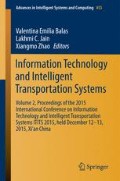Abstract
In the electronic warfare, the jamming resource optimal distribution is always an important research topic. Through the existing interference effect assessment criteria, jamming effectiveness evaluation index, general jamming resource allocation model is established. Through the study of the integration of interference target, the distribution model is divided into two categories, one-to-one and much-to-little. The one-to-one model is dealt by Hungarian algorithm and the much-to-little model is dealt with the combination of Hungarian algorithm and dynamic programming algorithm, which is called secondary optimal distribution method. Finally the radar jamming resource assignment example shows the method is effective.
Access this chapter
Tax calculation will be finalised at checkout
Purchases are for personal use only
References
Lv YS, Wang SZ, Wang XW et al (2005) Study on the allocation tactics for radar jamming resources based on close degree. Syst Eng Electron 27(11):1893–1894, 1974
Wu G, Chen ZY, Pang N (2011) Apportioning of radar jamming resources based on Hungarian method. Ship Electron Eng 31(1):87–91, 94
Shen Y, Chen YG, Li XH (2007) Research on optimal distribution of radar jamming resource based on zero-one programming. Acta Armamentarii 28(5):528–532
Xue Y, Zhuang Y, Ni TQ et al (2010) One improved genetic algorithm applied in the problem of dynamic jam resource scheduling with multi-objective and multi-constraint. In: Proceedings of the IEEE 5th international conference on bio-inspired computing: theories and applications, pp 708–712
Xue Y, Zhuang Y, Ni TQ et al (2014) Self-adaptive learning based discrete differ-ential evolution algorithm for solving CJWTA problem. J Syst Eng Electron 25(1):59–68
Wang YX, Qian LJ (2008) Weapon target assignment problem satisfying expected damage probabilities based ant colony algorithm. J Syst Eng Electron 19(5):939–944
Ren S, Si CZ, Lei J (2008) Fuzzy multi-attribute dynamic programming model for radars distributing machine allocation. Syst Eng Electron 30(10):1909–1913
Author information
Authors and Affiliations
Corresponding author
Editor information
Editors and Affiliations
Rights and permissions
Copyright information
© 2017 Springer International Publishing Switzerland
About this paper
Cite this paper
Gao, Y., Li, Ds. (2017). Electronic Countermeasures Jamming Resource Optimal Distribution. In: Balas, V., Jain, L., Zhao, X. (eds) Information Technology and Intelligent Transportation Systems. Advances in Intelligent Systems and Computing, vol 455. Springer, Cham. https://doi.org/10.1007/978-3-319-38771-0_11
Download citation
DOI: https://doi.org/10.1007/978-3-319-38771-0_11
Published:
Publisher Name: Springer, Cham
Print ISBN: 978-3-319-38769-7
Online ISBN: 978-3-319-38771-0
eBook Packages: EngineeringEngineering (R0)

